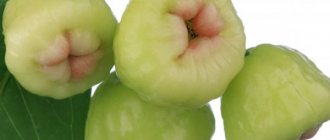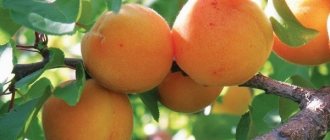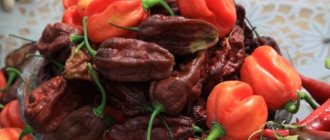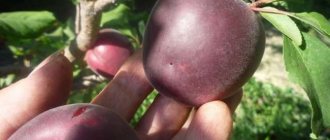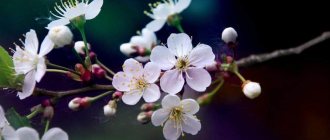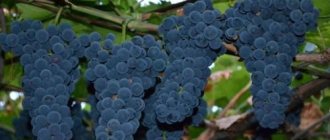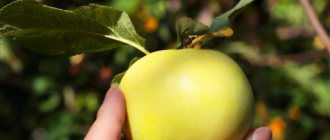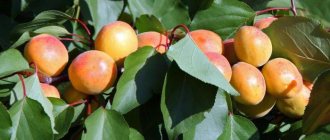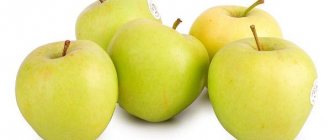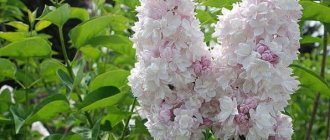Botanical description
Plants are often useful, but they can also be dangerous. Hogweed is one of these. A plant with this name contains many useful substances. In addition, it has an attractive appearance.
Hogweed can be either a biennial or a perennial plant, which is distinguished by its powerful appearance. The height of the stem reaches 6 m, at the same time the powerful root of hogweed without additional branches.
The rhizome is close in appearance to the shape of a carrot. The color is white, with a slight yellowish tint, up to 1 m in length. The stem is thick, with a ribbed surface, hollow inside, with stiff hairs. Branched at the top.
The leaves are divided, with segments of different shapes.
The flower is yellow-green. Basal foliage up to 80 cm or 1 m in length and up to 40-80 cm in width. The petiole is long, with a groove. There are several leaves on the bush, and they are collected in a rosette at the root. The upper ones are sessile, tightly clasping the stem.
Hogweed - a beautiful, but very dangerous plant
Description of fruits, flowers and seeds:
- The flowers are small white, green-yellow or pink, collected in an umbrella with a diameter of 50-60 cm. One plant can have up to 80 flowers. They produce a large volume of nectar, made from light gray pollen that is attractive to bees. Flowering continues in September-October.
- The fruit is represented by a large flat brown achene 7-8 mm in size, which ripens from late June to October.
- Seeds remain viable for 2-3 years.
The plant reproduces using seeds.
The basic formula of the flower looks like this: *H5,OL5T5P(2).
Hogweed seeds
Types and varieties
Not many species of hogweed can be found in cultivation.
Common hogweed (Heracleum sphondylium)
A biennial North African and Eurasian plant of large size with a hollow grooved stem covered with stiff hairs. The seeds of the plant are valuable because they contain aromatic oil, which contains octyl ester of acetic acid.
- Tritsirtis
Siberian hogweed (Heracleum sibiricum)
Or pican, or bunch - a species that grows throughout Europe, as well as in the Ciscaucasia and Western Siberia. This is a biennial or perennial plant with a powerful vertical rhizome, a single hollow, ribbed and branched stem in the upper part up to 180 cm high and large, rough, lobed or pinnately dissected (sometimes twice or thrice) rounded-ovate leaves. The lower leaves are petiolate, the upper ones are not as large as the lower ones. Inflorescences are large complex umbels on 15-30 pubescent rays: the larger central umbels consist of bisexual flowers, and the lateral ones - of male, often sterile. The flowers are yellowish-green. Flowering occurs in summer, and fruiting occurs from July to September. The fruits are bare fruits. The whole plant exudes a pleasant aroma. Siberian hogweed is a medicinal and food plant: in Siberia, caviar is made from it, which tastes like eggplant; soup with Siberian hogweed has a mushroom aroma.
Hairy hogweed (Heracleum villosum)
Or bear's paw is suitable for use as a spice. This is a biennial herbaceous plant, developing a rosette in the first year, and stems, flowers and fruits in the second. Its rhizome is thick, white, fusiform, the stem is erect, round, grooved, up to 1.5 m high with a diameter of 3-5 cm. The leaves are petiolate, round, elliptical, pubescent, green, up to 60 cm long and up to 10 cm wide, with In this case, the basal leaves are much larger than the stem leaves. Small white bisexual flowers are collected in umbels with a diameter of 15-20 cm. The fruit is a bare oblong achene.
Hogweed Mantegazzi (Heracleum mantegazzianum)
Decorative deciduous perennial species. Its ribbed, glandular-pubescent stems branching in the upper part reach a height of 3 to 5 m and form a loose, spreading bush. The lower trifoliate or pinnately dissected leaves are located on long petioles. The upper ones are stalked, sessile, with large and swollen vaginas. The leaves, like the stems, are covered with reddish spots. Numerous white flowers of Hogweed Mantegazzi, collected in large complex umbrella-shaped inflorescences up to 1 m in diameter, have a specific odor. Flowering of this species occurs in June-July.
Sosnowsky's hogweed (Heracleum sosnowskyi)
Or poisonous hogweed - a large herbaceous plant, which in the middle of the 20th century was cultivated as a silage crop, not suspecting that it would go wild and begin to spread into the natural ecosystems of Northern and Eastern Europe. Today it can be found on the banks of reservoirs, wastelands, forest edges and clearings, mountain slopes, river valleys, along roads and in uncultivated fields in Lithuania, Latvia, Estonia, Scandinavian countries, Belarus, Germany, Poland, Ukraine and Russia. The leaves and fruits of plants of this species contain a large amount of essential oils containing furanocoumarins, which, when they come into contact with the skin, increase its sensitivity to ultraviolet rays, and this leads to severe burns. Therefore, it is better to avoid any plant similar to hogweed.
Sosnowski's hogweed grass is a very large biennial or perennial plant that blooms and bears fruit only once, and then dies. It reaches a height of 1 to 4 m. It has a taproot system reaching a depth of 2 m, but the bulk of the roots are located no deeper than 30 cm. The stem of the plant is rough, grooved-ribbed, purple or green with purple spots, partly fleecy, with large trifoliate or pinnately dissected yellowish-green leaves from 1.4 to 2 m long. Complex umbels of inflorescences up to 80 cm in diameter consist of 30-75 rays with numerous pink or white flowers, of which there can be up to 80 on one plant 000. Flowering lasts from July to August, and broadly elliptical or obovate fruits 10-12 cm long ripen from July to September.
Chemical composition
There is an interesting fact that hogweed was previously used for cooking. This is due to its unique composition.
Main components:
- sugar - 10%;
- vegetable protein - 16%;
- essential oils - 2%;
- fiber, amino acids, tannins - 23%;
- vitamin C - 212 mg per 100 g.
The composition also contains useful minerals such as iron, titanium, boron, nickel, copper, manganese and carotene compounds. It also contains octyl ether, which fights trichomonas pathogens that lead to inflammation of the mucous membranes, inflammation of the kidneys and bile ducts.
Previously, hogweed was added to food
Benefits of hogweed
As often happens in nature, a poisonous plant can simultaneously have beneficial properties.
The benefit of hogweed lies in the microelements (manganese, iron, copper, potassium, zinc, etc.) that are contained in the young shoots of the plant.
Young shoots of some types of hogweed are used in cooking
The composition based on the roots, leaves and stems of hogweed has wound-healing, bactericidal and anti-inflammatory properties.
The healing qualities of this herb helped traditional healers treat purulent inflammations, wounds and ulcers.
People have long known that the young leaves of this weed can be added to food. In the Caucasus, local residents used young hogweed to add to cheeses. In old Rus' they cooked borscht from it, which gave the dishes a special taste.
In the Caucasus, hogweed greens were added to cheeses
Experienced healers used the roots of hogweed to make medicinal decoctions that were used to treat inflammation, asthma and epilepsy.
Without experience in handling this poisonous plant, you should not prepare and collect raw materials. This is dangerous for your health!
Among other things, hogweeds provide benefits by producing oxygen and absorbing carbon dioxide. Considering the large size of the plant and the leaf area, we can conclude that the contribution of these weeds to oxygen saturation of the planet’s atmosphere is significant.
Active ingredients
One of the main substances in Sosnovsky's hogweed is furocoumarin.
Its properties are as follows:
- increases skin sensitivity to the sun;
- causes burns;
- gives the plant a special smell and taste, which makes it unsuitable for human and animal consumption.
Hogweed juice contains substances that are released upon contact with sunlight and bind to DNA in the skin. Blisters, accordingly, appear on the skin immediately after working with hogweed. The burn looks like a sunburn.
The bulk of the poison accumulates in the roots.
This feature protects this type of plant from insects.
Hogweed roots are the most poisonous part of the plant.
The effect of poisonous juice on the skin
Hogweed juice contains a toxic compound - coumarin bergapten. When it comes into contact with the skin, it acts like a magnifying glass that collects the rays of the sun, causing severe burns. Even one drop of poisonous juice can cause severe skin damage if the victim is exposed to the open sun. The juice of the plant is transparent, so it is not even noticeable on the body. If after two days a person does not get exposed to the sun, then perhaps there will be no consequences.
The burn appears only from exposure to ultraviolet radiation, because the juice reduces the sensitivity of the skin many times over. This feature is called phototoxicity. Depending on the amount of juice and the intensity of exposure to sunlight, a person receives burns of varying degrees of severity. The risk of blistering persists for several days after contact with the sap, so it is still necessary to carefully treat the affected area.
Pharmacological properties
Poisonous hogweed is popular for its medicinal properties. Many have learned to make useful medicinal compounds from it.
Hogweed juice is usually used for these purposes.
What can the seeds and the plant itself be used for in medicine:
- cure animals of worms;
- the seeds are used to obtain psoralens - substances necessary to get rid of psoriasis;
- Treatment of epilepsy and asthma is also possible if you use certain species, for example, Siberian hogweed.
The hogweed grass, which has not yet grown, makes it possible to use not only foliage, but also roots as medicinal raw materials.
Hogweed leaves
It grew on its own
It’s worth making a reservation right away. Alas, all theories about “alien” origin or artificial creation as a weapon have no basis in reality. Hogweed has existed on our planet for millions of years. One of the species, Siberian hogweed, has been known to the inhabitants of Russia for several centuries, and its first mention under the name “hogweed” dates back to the 16th century.
Then it was simply called borscht and was actively consumed as food; most often this name meant Siberian hogweed. Its young shoots were added to food, but after two hundred years the names were separated. Borscht came to be called soup with the addition of beets, but hogweed remained hogweed.
Despite the name, Siberian hogweed grows almost throughout Russia. It was this or the similar common hogweed that we most often used in childhood to make the highest quality spitting pipes. Its hollow barrel is ideal for creating "spirit weapons". Hogweed juice can cause inflammation on the skin, although not at all severe. Until the end of the 80s, the word “hogweed” meant exactly this plant, often found along forest edges.
Indications for use
The juice of the plant makes hogweed very useful in the fight against many common diseases.
Indicated for the following deviations:
- increased excitability, because characterized by a calming property;
- biliary tract diseases;
- colic;
- jaundice;
- high blood pressure;
- menstrual pain.
Note. The plant has a wide range of medicinal uses in folk medicine.
Hogweed juice is used in the treatment of diseases
Harm and danger
Why is hogweed dangerous? The juice of this herb causes serious burns that do not heal for a long time. This is important to consider when hiking in nature.
In addition, even after completely disappearing, they can reappear after a certain time if the same place receives an excessive amount of sunlight.
The leaves and substances released from them may pose other hazards:
- damage to the mucous membrane;
- symptoms of damage do not appear immediately, but after some time;
- if 80% of the body is damaged, death is possible
Even a minimal dose of juice causes dangerous symptoms. In addition, substances can accumulate in the body and provoke skin diseases such as vitiligo.
The consequences of contact with this substance are the loss of melanin, which leads to the appearance of symptoms of the disease.
Hogweed in the garden leads to the destruction of almost the entire crop.
Vitiligo is a disease that can occur after contact with hogweed.
Why is hogweed dangerous?
A seemingly harmless plant actually poses a serious threat to humans. Hogweed is most dangerous during flowering.
Hogweed is a poisonous plant. Its juice causes severe burns.
Juice, pollen and even the smell of grass can cause damage to health. Most often, people suffer from burns and allergic reactions to sap and pollen.
Toxic substances contained in pollen, leaves and stems affect the eyes, skin, respiratory and digestive organs.
Hogweed is especially dangerous for children. Photo: Marta Jermacek-Sitak
Hogweed is very dangerous for children. Even being a few meters away from a flowering plant does not guarantee protection from its negative effects.
Children are especially active in the summer. There are cases when children plucked weed stems and made them into something like a spyglass, and then lost their sight.
Sometimes children make spitting tubes from hogweed stems. In this case, in addition to a burn, the child may receive an allergic reaction in the respiratory tract.
The senators proposed fining summer residents up to 3 thousand rubles for hogweed on their property. View details...
Burns
Botanists have long discovered the reason why hogweed causes burns on the skin. It's all about the substances - furanocoumarins, which are rich in the leaves and stems of the weed.
A burn from hogweed juice looks quite unpleasant
When a person touches the leaves or stem of a poisonous weed, furanocoumarins are transferred to the skin. These substances greatly increase the skin's sensitivity to ultraviolet radiation, which leads to burns. This phenomenon is called phototoxicity.
The danger of hogweed burn is that in the first minutes people do not feel any unpleasant symptoms. The consequences of exposure to toxic substances in the form of blisters appear after several hours or even days.
If the juice gets on the skin on a sunny day, a very short stay in the sun is enough to cause a severe burn.
What to do for burns
If, after meeting with hogweed, you feel unwell or get a burn, you should urgently consult a doctor at the nearest medical center.
Burns and an allergic reaction to hogweed juice can be fatal.
Usually, after examining and assessing the extent of skin damage, the doctor prescribes a course of treatment with ointments that relieve inflammation.
Hogweed may pose a serious health risk
What to do when you find yourself far from the hospital and suspect that hogweed juice might have gotten on exposed skin?
- Wash damaged areas with clean water and soap;
- After some time, repeat the procedure;
- Protect damaged skin areas from the sun;
- Go to the hospital.
Remember that hogweed is especially dangerous in sunny weather, during the flowering period.
How to distinguish a poisonous plant
The plant has about 70 varieties. In Russia, 40 species are currently discovered. However, they are not all dangerous.
Often safe hogweed can be found in the garden. It may even be edible.
The main features of a poisonous plant species:
- large size;
- thick stem;
- white flowers.
Sosnovsky's hogweed is recognized as the most poisonous, characterized by a large umbrella structure and a thick stem up to 1 meter in height. The base of the stem can reach 5-7 cm in diameter.
Sosnovsky's hogweed is one of the most poisonous plant species
Why can't you touch
The plant attracts attention with its massive appearance and pleasant smell.
And this is its main danger, especially for children, because... he gets their attention.
Symptoms of a burn do not appear immediately. But when they appear, you need to pay attention to them.
The symptoms are as follows:
- severe redness on the affected area of the skin;
- the appearance of bubbly neoplasms with liquid on the surface;
- itching and burning sensation;
- temperature rises;
- general health worsens.
Hogweed affects the skin in such a way that doctors diagnose the patient with a 2nd degree burn. The difficulty is also that the blisters can get infected, and scars will appear on the body that will not heal.
Second degree burn from hogweed
Poisonous varieties
Hogweed grass is known for its dangerous properties, however, only 3 types are considered the most dangerous. They can be distinguished by their appearance.
It is advisable to remember their names and characteristic features.
Types of poisonous hogweed bush:
- Sosnovsky. Most often used when mentioning the word “hogweed”. It is 3 meters high and blooms with white or pink flowers. The leaves are large and dense, growing in large volumes. In Russia it is the most common and dangerous. Has an impressive appearance.
- Mantegazzi. Record holder for the concentration of poison in its composition. Grows in height up to 6 meters. Perennial. The flowers are white and the fruits are green. It grows fastest and is most often found in the Caucasus regions.
- Wild. Biennial with white flowers and 2 meters high, distributed in the southern regions.
Please note that the fight against hogweed must be carried out regularly in order to preserve the life and health of people and animals. Residents of southern cities should be especially wary of poisonous hogweed.
Hogweed Mantegazzi - the tallest of all species
Safe varieties
Safe hogweed has only 2 types: Siberian and Shaggy.
Siberian is edible . It can be found in Europe, the Caucasus and Western Siberia. It is also found in Crimea and Kazakhstan.
Can be annual or perennial.
Description of the bush, composition and application:
- leaves are rough, voluminous;
- contains vitamin C, essential oils, carotene;
- humans can consume it in their diet or feed it to livestock.
Hogweed juice can cause skin irritation, and this is worth considering before picking it and preparing it for yourself or livestock.
Siberian hogweed - edible plant
What is hogweed? Botanical characteristics
Hogweed is a perennial plant. Reaches an average of 1.5 meters in height, and some species are even six meters tall. The stem of hogweed is hollow, ribbed, covered with scales and fairly hard fibers. The branches of this grass are located closer to the top. The leaves are large, sometimes reaching half a meter in length. Their upper surface is mostly smooth, and only the central vein is covered with hairs. The root system is powerful. The flowering period is early and mid-summer, and the plant bears fruit in August. It is widespread in Europe and Asia. In Russia, it is most often found in Altai, the Caucasus, the Urals, Siberia and Udmurtia. It has about seventy species. Capable of actively reproducing through self-seeding.
What does blooming hogweed look like? In this state it is a magnificent sight! White, greenish-yellow or deep pink tiny flowers are collected in complex compositions - the center consists of many (sometimes up to a hundred) small umbrellas. On a summer morning, large, bright green leaves collect dew in such quantities that you can wash your face with it. This picture looks simply amazing, you just want to come closer and touch it with your hands. But all this alluring beauty, unfortunately, is full of danger...
How Sosnovsky's hogweed was bred
Where hogweed came from will become clear if you study its origin. The history of the appearance of Sosnovsky's hogweed began in 1944, when botanist Ida Mandelova first mentioned it. At the same time, the flower received its name in honor of the scientist Dmitry Ivanovich Sosnovsky, who previously studied the vegetation of the Caucasus.
It blooms, as a rule, 3-5 years after the seeds enter the soil. For reproduction, cross-pollination or self-fertilization is used. The seeds obtained in this way grow into normal adult inflorescences. Accordingly, even a single hogweed is capable of quickly multiplying and growing.
For the first time, institutes began to research the cultivation of silage crops in the selection center.
The study work began with the decision of a meeting of the field of animal husbandry at the Academy of Agricultural Sciences of the Soviet Union.
Some historical facts:
- Plants of this species grew and developed rapidly, which attracted the attention of breeders and the government.
- In 1947, Common Hogweed began to spread to other countries, such as the Baltic states, Belarus and the German Democratic Republic. In the 70s, it began to appear on the Russian borders.
- For some time it was exhibited in botanical gardens, presented as a decorative species.
- Plants of this type were often planted along fences to protect crops from animals.
Common hogweed was previously called "Stalin's Grass". There was a version that Stalin used it as a weapon of revenge. It was also grown during the times of Khrushchev and Brezhnev. As a result, scientists grew Sosnovsky's hogweed.
Hogweed is also called "Stalin's grass"
International growing experience dates back to the 19th and 20th centuries. At that time, common hogweed was used as food for animals such as deer, aurochs, bears and ordinary livestock. Mongolian herders “restored” strength to animals that had become weak in the winter.
Interestingly, if the plant is consumed by livestock, the milk will acquire an unpleasant taste, and the animals will die from the toxic substances in the composition. The grass is also dangerous because the substances in its composition lead to chromosomal mutations. The plants ceased to be grown after these research results were received in 1930.
However, the Soviet Union did not pay attention to the experiences of other countries. Over time, the study and sectioning were simply abandoned.
The grass retained its properties and began to grow uncontrollably in the wild.
Fighting Sosnovsky's hogweed and its other varieties is now the main task of gardeners and scientists. Its appearance speaks of the thoughtless use of natural resources by humans.
Dangerous plant
What does a hogweed burn look like?
The burn from the Bolshevik plant (photo can be seen in the article) resembles a burn from boiling oil. The skin becomes reddish in appearance and there is a burning sensation and itching. Many people do not pay attention to such symptoms and continue to walk under the scorching sun, which leads to a worsening of the situation. At the site of skin contact with the weed, a huge blister with serous contents “grows”. How to treat burns from the Bolshevik plant at home?
First measures after poisonous juice gets on the skin:
- Hide from the sun to prevent ultraviolet radiation from reaching the affected area.
- We wash the poison off the skin with cool water, then generously lather it with laundry soap and wash it off again. If the affected area of skin is too large, then a cool shower will help, and you need to soap yourself at least three times.
- Shake a liter of water with 4-6 furatsilin tablets. Moisten a waffle towel generously in the solution and apply to the affected area. If there is no furatsilin, add a layer of regular soda and replace it with fresh powder every half hour.
- Sprinkle the area with baby powder containing zinc; if this is not available, then zinc ointment based on petroleum jelly will do.
- It is necessary to take any antiallergic drug (Loratadine or Suprastin).
- Stay home for 48 hours.
Serious symptoms that require immediate medical attention:
- a sharp increase in body temperature up to 40 degrees, the slightest delay is fraught with death;
- the burn affected the skin of the face and head;
- poisonous juice gets on the mucous membranes;
- more than 10% of the entire body surface is affected by a burn;
- after exposure to the sun, the skin became covered with ulcers, blisters and deep burns.
Advantages and disadvantages
The struggle is becoming widespread. Many gardeners have already personally seen what hogweed looks like, but not everyone knows how to distinguish hogweed from other weeds and what its strengths and weaknesses are.
These plants are monoecious, i.e. have both male and female flowers. Their flowering continues once in a lifetime. It is quickly removed from the soil so that the seeds do not remain in the garden bed.
Strengths:
- grows until it produces seeds;
- seeds ripen in a volume of 20 to 70 thousand per bush. They retain their germination capacity from 5 to 15 years;
- the surface of the seeds is covered with essential substances, which, when released into the soil, destroy the roots of neighboring crops.
There is another feature of them - they can be carried 2 km by the wind, birds, animals, and stick to car wheels.
Typically, they can spread up to 4 km or more. The fallen ones can be transported by water or after the umbrellas have matured.
Plants also have weaknesses:
- After the seeds have bloomed and ripened, the time comes for the weed to die.
- The taproot system does not indicate vegetative propagation. If you cut off the top of the stem, you can wake up the sleeping buds.
- May die from high soil moisture.
- Dense soil will not allow planting material to germinate if it gets 25-30 cm deep.
- Siberian, Sosnovsky and other varieties need a large amount of sunlight.
The fight against hogweed begins taking into account its strengths and weaknesses. If you know the nuances, the fight will be easier. Hogweed can be removed if done carefully, taking into account personal protection measures.
Hogweed seeds
The weed has conquered the territory
It is extremely difficult to remove the Bolshevik plant, a photo of which can be seen in the article, from your site. Even umbrellas separated from the stem can produce full-fledged seeds. Once ripe, they are carried by the wind up to 5 meters, and they are also spread by the wheels of vehicles or the soles of pedestrians. Therefore, hogweed can sprout in a completely different area, far from the place where the mother plant grew. If you cut off the top or cut it down to the root, the hogweed will grow green mass again.
If you touched hogweed
Do not touch the plant with bare hands. If this happens, immediate safety measures must be taken. Skin damage should be treated carefully, without applying significant pressure, as with burns, so as not to worsen the situation.
What to do if you touch or touch a bush:
- Take soap and a soft sponge. The juice must be washed off completely with a large volume of water.
- If there is damage to the eyes or mouth, it is necessary to rinse the affected areas with plenty of water for at least 15-20 minutes. The oral cavity should be rinsed as after brushing your teeth.
- Afterwards, you must immediately go into the shade, try not to go outside for at least 2-3 days, or wear closed clothes and take an umbrella with you.
Once blisters appear, they should not be scratched, swollen areas should be pierced, or operations other than rinsing should be performed. It is better to seek medical help if you notice redness.
Hogweed juice must be washed off carefully with soap and plenty of water.
Safe types
Most species of this plant are still safe, and only a few of them are found in our country. As a rule, they look less threatening: they have less rigid stems and leaves, and do not grow to such huge sizes . Having met these varieties, you can calmly touch them:
Shaggy - common in the south: in the Crimea, the Caucasus, and Asia Minor. It reaches a height of up to one and a half meters and blooms with white flowers.- Dissected - mainly grows in forest-steppes and on the banks of rivers in Siberia, has large white flowers.
- Siberian - it can be found almost throughout Russia. It is low, strewn with green-yellow flowers, and its fruits resemble an egg in appearance.
All these species are not only safe, but also eaten and used for medicinal purposes.
First aid for the development of a burn
You cannot treat inflammation after contact with hogweed on your own. You can only alleviate the first symptoms.
What to do if contact with a plant occurs:
- The juice is soaked in soft matter. It should not be smeared, but only blotted.
- Place a clean gauze bandage on the affected area.
- It is advisable to wear long sleeves that cover the affected area.
Next, the victim is taken into a closed room. Treatment should be carried out only in a shaded place, preferably without fluorescent lighting.
What activities are performed indoors:
- Wash the affected area with a solution of baking soda and soap.
- Moisten a cloth with alcohol or vodka and wipe the area. The product allows you to dissolve furocoumarin, which makes it easier to remove.
- After cleaning the surface, you should treat the skin with fir or sea buckthorn oil, or use Panthenol spray.
Even when indoors, the lesion should not be exposed to lamp radiation. Antiallergic medications must be taken for 5 days.
Tablets such as Zodak, Suprastin or Tavegil are suitable.
It is also worth remembering what not to do.
After contact with hogweed, you must not:
- treat the affected parts with traditional recipes, for example, milk, dog saliva, etc.
- applying soil will increase the infection;
- treat the area with vegetable juice.
If severe pain occurs, the doctor prescribes an anti-inflammatory drug, for example, Ketonal, Nimesil.
Panthenol is a reliable remedy for the treatment of burns
Fighting hogweed on the site
How to get rid of hogweed
The best way to protect yourself and your loved ones from hogweed burns is to remove this plant from your site. You need to start fighting the plant with chemicals (herbicides) at the moment its shoots emerge and carry out frequent and intensive treatments until the hogweed begins to flower. The concentration of the solution should be 2-3 times stronger than suggested in the instructions. Three sprayings with a break of 2-3 weeks will be enough. Chemical treatment is carried out on a cloudy day, taking all precautions: wearing thick clothes with long sleeves, trousers and gloves. After work, clothes must be washed.
However, if flowering has already begun, then chemical treatment will not give results, and you will have to cut and burn the inflorescences so that the plant does not reproduce by self-sowing: hogweed seeds are produced in large quantities, and many of them, having fallen to the ground, will germinate in the spring.
An effective way to control if the hogweed on the site has grown greatly is to burn it. This method requires great care: the plants are doused with flammable liquid so that all the inflorescences with fruits get wet. And keep in mind that when burned, the fruits will release flammable essential oils.
They fight against hogweed using agrotechnical methods: using a flat cutter they cut off the roots of the plant at a depth of 5-10 cm, cutting off the growth point. But if a large area is occupied by hogweed, you will have to resort to plowing, which is carried out several times during the growing season, and depending on the weediness of the field, you will have to do this for 2-7 years. In autumn, plowing in an area with hogweed cannot be carried out, since it will contribute to the accumulation of its seeds in the soil.
- Alyssum: planting and care, types and varieties
Small hogweed shoots are destroyed during weeding, but they can appear not only in the spring, but throughout the summer, so regularly inspect the area and destroy young plants.
What not to do when destroying hogweed
Firstly, you should not mow hogweed at the moment of fruit set, unless you intend to burn it immediately. Cut, torn or mown plants cannot be left in place, since the stem has a large supply of nutrients, which will allow the seeds to ripen, because seeds that have reached milk maturity can give life to a new plant.
Secondly, you cannot mow hogweed or cut off its inflorescences during the period of ripening and shedding of seeds, as this will lead to the spread of hogweed to new territories.
Thirdly, you cannot work with hogweed without protecting your body with waterproof clothing. Don't forget to also wear a protective mask on your face.
Hogweed distribution
Hogweed Sosnovsky is the most popular weed in the fields of many countries.
Countries where hogweed is most common:
- regions of the central and eastern Caucasus;
- Transcaucasia;
- Türkiye.
In these areas, hogweed grows in mountain forests and subalpine meadows.
Many species of hogweed today grow wild in areas of northern and eastern Europe. For example, Sosnovsky's hogweed can grow in one place for a long time. Often found on the streets of big cities.
Fighting poisonous hogweed
Types of hogweed
There are about 70 plant species. We have only a few species growing, which are divided according to the degree of threat to humans. In the European part of Russia and in western Siberia, Siberian hogweed is widespread, which is used for treatment and is edible. Also completely harmless to health is common hogweed. The most dangerous type of plant is considered to be Sosnovsky's hogweed, which has rugged leaf edges and considerable height. Its stem is densely covered with hairs with purple patches.
What does hogweed look like at different stages of growth and development?
Common and Sosnovsky's hogweed develops in stages, like other crops.
Development proceeds according to the following scheme:
- leaves begin to develop in April-May;
- adult Hogweed Sosnowski becomes developed already in June;
- the stem becomes massive with a hollow surface inside.
All varieties of hogweed are identical to each other. It is difficult to determine what type of plant it is, so it is always better to assume that it is Sosnowski's hogweed. It has white flowers, while Siberian has light green flowers.
All types of hogweed are very similar to each other, so they are not easy to distinguish
Pandora's Box
Around the end of the 80s, when the fields begin to be overgrown with grass, hogweed begins its victorious march along the roads and clearings of the country. The seed productivity of the central hogweed umbrella per generative shoot ranges from 2500 to 3500 seeds (and there are from 1 to 5 inflorescences per individual, rarely up to 11), that is, a total of about 20–35 thousand seeds are produced annually by one plant. Sosnovsky's hogweed abruptly went wild and began to dominate with great speed over local species that were completely unaccustomed to this.
And if in the forest or in the fields it has almost no chance of breaking through the defenses of the local flora, then in recently plowed fields, previously cultivated plots of land, abandoned farms, the Sosnovsky hogweed has freedom. Plants reaching three meters in height simply dominate the environment, not giving other species a single opportunity. Plants actively occupy the banks of reservoirs, wastelands, and road right of way. According to some data, more than a million hectares are currently occupied by Sosnovsky's hogweed in the European part of Russia alone.
Currently, hogweed has spread well throughout almost the entire territory of western Russia. Every year it goes further and further - to the south and east. There is Sosnovsky's hogweed beyond the Urals, and they have begun to fight it in Tatarstan. Seeds most often travel on car wheels, along with the wind. As a result, the speed of spread is enormous. In the Leningrad region there are already very few areas where vacant lots are not occupied by hogweed.
And, it would seem, what’s wrong with huge and almost unearthly thickets? The thing is that hogweed is not only an ideal weed that grows in your garden bed over and over again. It is also very dangerous for humans.
Plants similar to Sosnowski's hogweed
Hogweed is dangerous because many varieties look similar to each other. Sosnovsky's hogweed has many doubles.
Doubles of this type can be:
- poisonous wekh or hemlock;
- hemlock;
- forest sedum;
- whine;
- Angelica officinalis or Angelica officinalis, or Angelica;
- angelica or angelica;
- angelica bear or bear's pipe.
These plants are similar, but have differences.
Vekh poisonous or Hemlock
Similar to hogweed, but different from standard varieties.
Main differences:
- thin foliage shape;
- small flower petals.
If in doubt, it is better to destroy the bush.
Cicuta
Hemlock
Plants with this name are biennial, and young hemlock is easy to identify. It grows mainly on roadsides and in forests where soil damage has been noted.
How to identify a plant:
- in the first year of life a rosette is formed;
- It has several leaves, dissected;
- the adult variety is distinguished by red spots and plaque on the stem;
- Hemlock has a characteristic odor reminiscent of mice.
Hemlock is more dangerous than hogweed because... its bush can cause harm with all its parts.
The poison penetrates the bloodstream in a short time.
Hemlock
Forest kupir or forest carrot
The species of this shrub number more than 20 subspecies, which are distributed mainly in the countries of the former Soviet Union.
Features of external features and application:
- resembles parsley or carrot tops;
- applicable for the preparation of medicinal potions;
- often used for cooking.
This bush blooms no longer than 1 year.
Carrot forest
Snooze
Plants of this variety are perennial, growing in the Eurasian parts of the country.
What are the differences:
- grows in the shade of trees;
- survives only on nutritious soils;
- a wild plant suitable for use in dishes.
Not as dangerous as hogweed, but requires care when handling.
Snooze
Angelica officinalis or Angelica officinalis or Angelica
Hogweed resembles this plant, but they should not be confused. There is a belief that an angel revealed the secrets of medicinal herbs to people. From this knowledge the name was derived. Angelica means Angelic.
Features of development and application:
- found in the Northern, European parts and New Zealand regions;
- a biennial that loves water and sun;
- grows on the banks of reservoirs.
Decoctions of this plant are healing. The leaves contain nutrients.
Angelica officinalis
Angelica sylvestris or Angelica silica
A plant from the Umbrella family is found in forest glades, swamps, meadows, and forest edges. Externally, it resembles hogweed.
Characteristics:
- increased levels of vitamin C;
- various minerals;
- used in salads, syrups, some types of sweets;
- used for problems of the gastrointestinal tract, respiratory system, etc.
You should be more careful when collecting herbs, with caution, and carry out work with gloves.
Angelica silica
Angelica bearish or bear's pipe
The leaves of this plant are used to prepare tinctures and decoctions.
Found in the following areas:
- Sakhalin;
- Kuril Islands;
- Kamchatka.
All of the listed herbs resemble hogweed in appearance and this is their main danger, so you need to approach their collection carefully.
Angelica bear
Is it possible to avoid being burned by a plant?
The surest and most reliable method is to avoid the plant. But it is not always possible to implement the advice in practice. When walking in the forest, wear a tracksuit; it will protect you from contact with the plant. If you notice young shoots of hogweed in the clearing that you have chosen for a picnic, then immediately leave from there. Keep an eye on small children, they constantly strive to try everything “by tooth” and can chew a hogweed leaf, which will cause damage to the mucous membrane of the tongue, or even suffocation.
Application
Hogweed is popular as a dangerous shrub, however, many farmers have learned to use its components to their advantage. Foliage, roots and stems are used. Hogweed is used in such popular areas as medicine, cooking, and in livestock breeding for branding.
In medicine
Extracts of this plant are used in modern medicines. Almost all known varieties are processed.
For medicines used:
- Leaves dried at room temperature.
- Roots are also used, which are crushed into pieces 10 cm long and left to dry for a month. It is necessary to turn them over frequently to protect the raw materials from rotting.
- Don't forget about the seeds. They are placed on a flat surface and stirred periodically.
For example, lotions made from hogweed leaves help against rheumatism.
You can store raw materials in clothes bags or paper bags. Properties will last no more than 2 years. After this period, the benefits of the herb are gradually lost.
Bags for storing dried plants
In cooking
Hogweed can be used in dishes if you choose the right variety.
Here it is worth remembering that for cooking they take foliage and shoots that were collected before the hogweed bloomed.
The plant is suitable for the following dishes:
- pickles;
- salads;
- marinades;
- soups;
- seasonings
Hogweed also makes it possible to prepare desserts. For example, it is successfully used as a filling.
A salad is prepared from the leaves. Boil them for 3-5 minutes, chop them, add onions and boiled potatoes. Everything is seasoned with sunflower oil.
Hogweed has its own taste, which will be complemented by other components.
Before use, you should make sure that the original product is safe.
Soup with hogweed
In other areas
Hogweed has found application in quite rare and unexpected areas of life.
It is applied for:
- Extraction of honey. This is a complex process that literally wears out the bees. However, up to 300 kg of honey can be collected from one hectare.
- Carvings of musical instruments. Craftsmen make many unusual instruments from it. For this, the hogweed must be dry.
- Cardboard production. Scientists have proven that during the production of cardboard, a large number of trees are cut down. It is more economical and safer from an environmental point of view to use hogweed for this purpose.
- Production of “anti-freeze”. This product does not pose a risk to health or nature. Hogweed, used as a “base” for the production of this product, reduces the cost of the resulting product without affecting the quality.
Dry branches do not pose a health hazard. Interestingly, projects are now being planned to treat eggs from salmonella with a solution of hogweed.
Hogweed - honey plant
Prevention
To prevent burns from plants, you must follow the following rules of conduct when outdoors:
Before going to an unfamiliar area, study the appearance of dangerous plants; Supervise children and avoid contact with unknown grass; When going out into the forest, you need to wear thick clothes that cover your legs and arms; At the dacha, near the house, uproot all dangerous, poisonous plants
Be sure to use personal precautions. Walking and picnics in nature are a great opportunity to enjoy the beautiful scenery and fresh air
But while in the forest, you should take care of your safety
Walking and picnics in nature are a great opportunity to enjoy the beautiful scenery and fresh air. But while in the forest, you should take care of your safety.
Hogweed is a plant of the Apiaceae family, which reaches gigantic sizes during the growing season. It is widespread in all CIS countries, including Russia. It is very difficult to control this weed due to its rapid growth and active proliferation. Hogweed burns are especially dangerous, since many plant species are poisonous.
